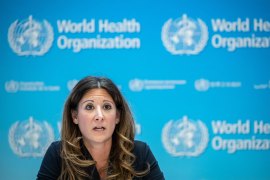Report Finds Racial Health Disparities Among New York State Health Plan Beneficiaries
The New York City-based advocacy group Community Service Society recently released a report that found racial health disparities among state health plan beneficiaries, New York Times' "City Room" reports. The report urged state officials to close the gaps. The roughly 20 health plans that contract with the state public health programs to provide health insurance to low-income residents are required to break down health indicators by race. Using data from the New York State Department of Health, researchers found that out of 12 measures the state uses in quality assurance, including dental visits, asthma management, mammography and almost all diabetes indicators:
- Blacks experienced health outcomes that were significantly worse statistically in 10 of the 12 measures;
- Whites had significantly worse outcomes in three measures, including childhood immunizations and mammography;
- Asian-Americans had statistically better health indicators than other groups in almost every area; and
- Outcomes among Hispanics were comparable or better than that of whites.
Elisabeth Benjamin, one of the authors of the study, said the differences could not be explained fully by socioeconomic status. "They've all made the same income cut. These are low-income people," Benjamin said. CSS President David Jones said, "It opens the windows into the fact that something is wrong."
The report recommends that the state use part of a $63 million bonus pool to fund incentive programs for government health plans, such as paying rewards to plans that reach certain health benchmarks. "Our position is that the health system is failing African-American folks, and we know that pay-for-performance works," Benjamin said, adding, "We're saying let's use [pay-for-performance programs] with a race lens, which has never been done in the country. We think this is one of the areas where New York state can take a lead in the country" (Lee, "City Room," New York Times, 5/18).
The report is available online (.pdf). This is part of the Morning Briefing, a summary of health policy coverage from major news organizations. Sign up for an email subscription.






